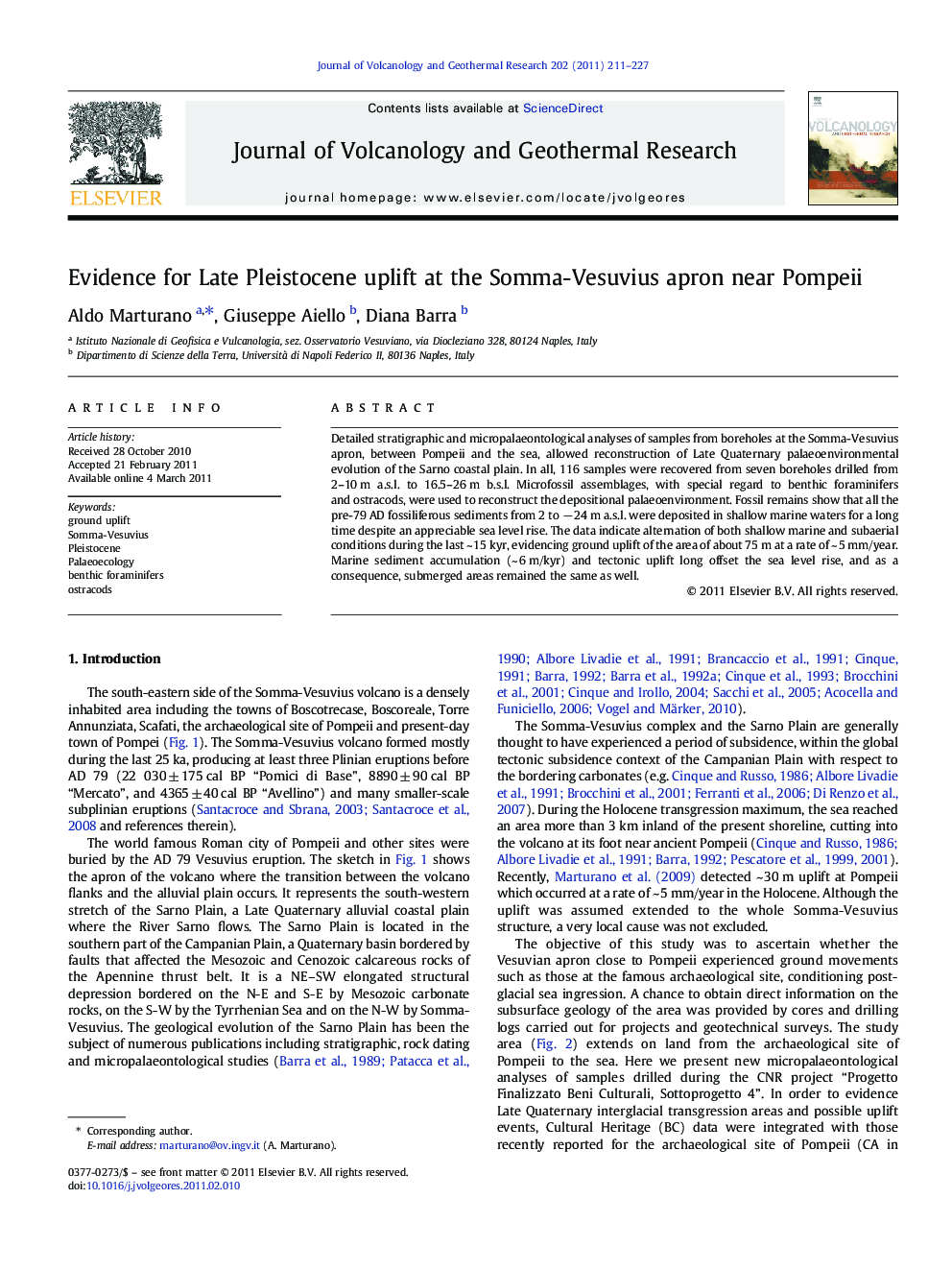| Article ID | Journal | Published Year | Pages | File Type |
|---|---|---|---|---|
| 4715072 | Journal of Volcanology and Geothermal Research | 2011 | 17 Pages |
Detailed stratigraphic and micropalaeontological analyses of samples from boreholes at the Somma-Vesuvius apron, between Pompeii and the sea, allowed reconstruction of Late Quaternary palaeoenvironmental evolution of the Sarno coastal plain. In all, 116 samples were recovered from seven boreholes drilled from 2–10 m a.s.l. to 16.5–26 m b.s.l. Microfossil assemblages, with special regard to benthic foraminifers and ostracods, were used to reconstruct the depositional palaeoenvironment. Fossil remains show that all the pre-79 AD fossiliferous sediments from 2 to − 24 m a.s.l. were deposited in shallow marine waters for a long time despite an appreciable sea level rise. The data indicate alternation of both shallow marine and subaerial conditions during the last ~ 15 kyr, evidencing ground uplift of the area of about 75 m at a rate of ~ 5 mm/year. Marine sediment accumulation (~ 6 m/kyr) and tectonic uplift long offset the sea level rise, and as a consequence, submerged areas remained the same as well.
Research Highlights► Long-term uplift of the Somma-Vesuvius is detected. ► Shallow marine water depositional palaeoenvironment is reconstructed. ► Deep volcanotectonic source of strain is proposed. ► Horizontal shifting of Sarno River is validated.
